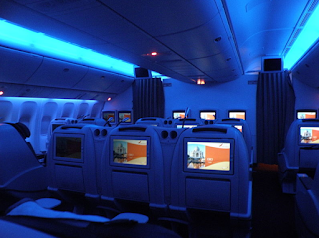If you think the purpose of dimming the lights is to let you sleep, then you're probably in the wrong ballpark.
If you're a nervous flyer, its probably not the answer you would like to hear.
The reason for dimming the lights out during take-off or when the aircraft is coming in for a landing (most crucial phases of flight) is to get your eyes adjusted to the darkness.In case of an emergency event, it is required to disembark the aircraft as quickly as possible.
If your eyes are adjusted to the dark, you'll be able to figure out the path for emergency exists (the emergency exit lights) and the emergency exits itself easily should the need arise.
Generally, it can take about 10-30 minutes to fully adjust to dark setting which implies that dimming the lights can aid eyes to pre-adjust to lower light.
So when a situation arises to evacuate your aircraft, time is one important factor where-in few seconds here and there can make all the difference.
If your eyes are pre-adjusted you'll atleast have an upperhand and ultimately evacuation process becomes less tedious.
“You want your eyes acclimated,” says Jon Lewis, a senior pilot with a major U.S. airline. “During nighttime takeoffs and landings, you dim the lights so that you have some night vision going on.”
So next time when you travel during night hours, don't just simply doze off as the crew dims the light!
What are your opinions about this interesting aviation fact? Would love to know in the comments!

WOW, It's fascinating and scaring both at the same time. From the perspective of a layman, we just thought of comfort. But there's science involved behind a very simple thing.
ReplyDeleteThat's why aviation never misses a chance to amaze us.
Yes Ananya! In aviation everything exists for a reason :)
DeleteI'm glad you liked this article.
It is one of the reasons for me as well, why Aerospace Engineering fascinates me!